- Administrator
- Albums and Singles
 The fifth album from this Chicago trio manages to create its own unique take on so-called psychedelic rock by clearly showing some influences that will give newcomers a familiar point to grab hold of while still taking them somewhere entirely new.
The fifth album from this Chicago trio manages to create its own unique take on so-called psychedelic rock by clearly showing some influences that will give newcomers a familiar point to grab hold of while still taking them somewhere entirely new.
"Parts Are Lost," the midpoint of His/Hers is where some of these influences show through the clearest—an ambience not far removed from the first Velvet Underground album and the buried, gentle vocals and stripped-down guitar work of Perfect Prescription-era Spacemen 3—yet it stands on its own with its jazz type structural composition. Spreading out in either direction, the influences become more blurred and the sound more experimental. "Forced March" is amped-up with clipping guitar riffs that chug along at a glacial pace. The shoegaze blur continues until about half way through when someone cuts the power, yet the band plays on until the end, the track entering like a lion and ending like a lamb.
"Moss Man" is built around a basic guitar twang and a truckload of reverb. Extremely Spartan instrumentation-wise in its opening, it soon gains in intensity and ends with a blowout that would make any shoegaze band of the early 1990s proud. The remaining tracks stray closer to the calmer, mellow end of the spectrum: quiet and slow, yet never easily ignored.
Folky psych-rock is one of the "it" genres right now, and Zelienople manage to go beyond the simple acts of using acoustic guitars and heavy effects and create something that stands on its own. The intentionally slow pace exemplifies the concept that simplicity in sound is not a factor of how little an artist can do, but how much can be done with a smaller palette, and in this case it proves to be quite a bit. It is an album that definitely rewards the attentive listener.
samples:
Read More
- Administrator
- Albums and Singles
 Over the last few years, Berlin's beloved have been intensely busy. Much of their time has been spent working concurrently on various projects, releasing around a dozen studio albums over the last five years. During this latest phase of the ongoing supporter project they set themselves a goal of producing an album over the course of a year, one song a month as a gift to those who were helping to fund their forthcoming album, Alles Wieder Offen. With three "bonus" tracks thanks to the phase lasting a few months longer than intended, the 15 Jewels are quite unlike Neubauten's entire back catalogue. Even the frequently challenging releases of the Musterhaus project do not prepare me for the sheer freedom expressed by the band.
Over the last few years, Berlin's beloved have been intensely busy. Much of their time has been spent working concurrently on various projects, releasing around a dozen studio albums over the last five years. During this latest phase of the ongoing supporter project they set themselves a goal of producing an album over the course of a year, one song a month as a gift to those who were helping to fund their forthcoming album, Alles Wieder Offen. With three "bonus" tracks thanks to the phase lasting a few months longer than intended, the 15 Jewels are quite unlike Neubauten's entire back catalogue. Even the frequently challenging releases of the Musterhaus project do not prepare me for the sheer freedom expressed by the band.
The songs were all written using the same template: Blixa Bargeld would compose the lyrics from dreams he had recorded in his diary (which vary in content from the plain strange to the utterly paranoid) and the music would be improvised based on the Dave system. The Dave system is similar to Brian Eno's Oblique Strategies cards: each of the cards features a word or phrase that encapsulates a particular mood, technique, or concept from the world of Neubauten (compiled by Bargeld while listening through the band's archives). Every band member takes a number of cards and uses the phrases written on them to find a role within the song. Despite using the same basic premise for each song, each song is vastly different to the others. Each song is its own world, a microcosm complete unto itself and replete with its own character and particular instruments. Surprisingly, despite each song being created in complete isolation from the others, the 15 tracks hang together wonderfully as an album.
Breaking free from their usual routine, they embrace instruments and rhythms that have not normally been part of their canon; the electronic approach to both the nightmarish "I Kissed Glenn Gould" and the bizarre "Vicki" is completely at odds with anything Neubauten have produced previously. There is also an international vibe to the album (much like the Tabula Rasa triptych) with lyrics ranging from the usual German to Chinese, Hungarian, Greek and English. "Jeder Satz mit ihr hallt nach" shares its name with an improvisation from their 1997 tour (and released on the Gemini download only live album) but is musically unconnected, there is an almost lounge feel to this new song which is a million miles from the original.
It is not all new musical vistas and textures. "Die Ebenen Werden Nicht Vermischt" is typical of Neubauten's most recent output. However, it does stick out amongst the more adventurous songs on the album. Its extended length (approaching 7 minutes compared to the 1.5-3 minutes that the others last) and rhythmic structure would have made it fit perfectly on 2005's Grundstueck album. Other songs contain some elements of familiarity but shoehorned in with an unusual approach. "Magyar Energia" is a mishmash of familiar techniques and instrumentation with unconventional delivery, especially the joyous anti-nuclear power football terrace chant towards the end.
Jewels may not run as smoothly as their previous albums as there is no obvious underlying concept to thread the songs together. Despite this, it is a fantastic album, especially considering it is meant as token of thanks to those who have provided financial support to record and release the band's forthcoming album. Hopefully these songs will make it into the band's live repertoire and more importantly get a release outside the supporters' project. For now, they are only available to subscribers to neubauten.org as both mp3 and uncompressed downloads. However, considering this album is the appetiser to the main course, it is well worth the price of admission while the oppertunity lasts.
samples:
Read More
- Administrator
- Albums and Singles
 It's important to note Menche is an experimenter of sound, not an academic. Here, he takes this opportunity to deconstruct the sounds made by conventional instruments and use them to create something far removed from the original source.
It's important to note Menche is an experimenter of sound, not an academic. Here, he takes this opportunity to deconstruct the sounds made by conventional instruments and use them to create something far removed from the original source.
Rather than focus on theories of audio construction and such frivolities, Menche would rather just take a sound source, play with it, and see what he can make it do. While this could be tedious and pointless for the average person to produce, Menche displays a natural talent for this work, and though he never makes specific reference to one, his works consistently show an ear for structure and composition that ensure a coherent piece rather than just a collection of random sounds that go nowhere.
On the three untitled tracks that make up Wolf's Milk, he chooses to use a specific instrument on each: organ, gong, and trumpet. The first track of organ recordings opens with a distant, but notable bass pulse that slowly increases in strength, like a car blasting bass heavy hip-hop in the distance. This pulse merges with other low tones into a solid, but quiet roar. It sounds like a contradiction, but there is a dense, prominent wall of sound that isn't very loud, but notable. Slowly, more traditional organ tones enter the mix: long sustained passages that are reminiscent of some of Hermann Nitsch's symphonic work. About midway though the track's duration, the sound begins to show some grime and dirt, the processing gets more intense, until building to a crescendo of stuttering, buzzsaw distorted passages that would definitely qualify as "harsh," before ending in a stream of subtle alien textures.
Using a gong, Menche can be expected to create a track with a more rhythmic backing, and the percussive tones that open the second track reflect this, though they sound more like a heavily processed synth sequence rather than a percussion instrument. Again, the actual gong tones become more notable as the track progresses. The final track of trumpet treatments focuses initially on the high register notes of the instrument, bouncing from channel to channel like an overly amplified housefly. The track eventually develops into an extremely thick mix, full of rich low and rumbles to counteract the ear shredding high pitched ones.
Wolf's Milk makes for a captivating listen, but the three tracks all seem to follow the same structural formula: heavily processed subtle openings, then some obvious untreated instrument sounds, then processed into harsh noise, then ending on ambience. As a whole it doesn't detract from the experience, but hearing Menche try some different frameworks for his tracks would definitely be a plus. It's a great disc but mixing things up structurally next time would be even better.
samples:
Read More
- Administrator
- Albums and Singles
 The international collaboration between electronics mangler Rutger Zuydervelt (aka Machinefabriek) and cellist Aaron Martin makes for an ominous, foreboding piece that would make for an excellent Hitchcock movie soundtrack.
The international collaboration between electronics mangler Rutger Zuydervelt (aka Machinefabriek) and cellist Aaron Martin makes for an ominous, foreboding piece that would make for an excellent Hitchcock movie soundtrack.
Using only the sound of Martin's cello and recorded water sounds, Zuydervelt feeds the source material through a battery of effects and signal processing, but still leaves enough of the instrument's natural sound in the mix, which only adds to the suspenseful tension created by the two long tracks on this disc. "Cello Recycling" opens ominously enough: the hum of alien machinery looming off in the distance somewhere and all sub bass hum and occasional rhythmic clicks is submerged in reverb. As the track progresses, the untreated sound of Martin's cello rises in the mix, the heavy organ like sustain of the strings thick like fog in the air. The climax is a full on roar of fuzz and distortion that would make any noise artist proud.
"Cello Drowning" remains a more subtle overall work, building upon the metallic echo of processed water drips, shaped into an almost rhythmic backing track aided by the more pronounced sound of the cello. While this track doesn't reach the harsh noise conclusion of "Cello Recycling," the subtlety works even better, leading to more pronounced sense of dread throughout, culminating in a swell of intensity at the end of the disc.
Originally commissioned for an art gallery, Type has seen fit to make this work more widely available, and as a crossover between the post-classical, the ambient, and the experimental worlds, it succeeds on all levels.
samples:
Read More
- Administrator
- Albums and Singles
 The Phill Niblock dedication on the first track's title is a dead giveaway to this album's sound and method of production; solo instruments processed into sheets of static tones that are held indefinitely. Schmickler and Chrisholm succeed in turning out two good tracks in that tradition, but the appeal of this album will certainly be limited by its self conscious austerity.
The Phill Niblock dedication on the first track's title is a dead giveaway to this album's sound and method of production; solo instruments processed into sheets of static tones that are held indefinitely. Schmickler and Chrisholm succeed in turning out two good tracks in that tradition, but the appeal of this album will certainly be limited by its self conscious austerity.
Despite the well worn methods here, there are some subtle touches that add individualty, the bagpipe playing on title track being the most prominent. To create a indefinitely long, continuous note from a wind or reed instrument, the player's breathing is often edited out of the mix when the sound is processed. Chisholm's breathing has been left in, even though gaps between the individual notes have been removed. His exhalations billow and sputter over the thick reedy tone of the bagpipe. The incoming air swirls and expands through a cavernous space, punctuating the gradual fluctuations in the bagpipe's pitch.
The second track, "Infinity in the Shape of a Poodle (For Björk Gudmundsdottir)", has a thinner construction, working by subtraction rather than addition. The source here is a Japanese mouth organ called a sho. The tone at the beginning is high but still full bodied. From there, it is gradually whittled down till only the barest overtones are left as a ghost image of the instrument. If I didn't know the source here was an accoustic insturment, I would have thought it was completely artificial. The frequencies would be ear-piercing if the change had not been so measured. The result is a clean metallic shimmer that buzzes like the haphazard offspring of a neon light and a cicada.
Although Amazing Daze is not completely redundant, there is more than a passing resemblance here to the work of pioneers like Niblock and Barry Truax. This is not a crictisim of Scmickler and Chisholm's abilities, but at the rigid methodolgy they use. Any music, no matter how eclectic and baroque, will drone given the proper amount of time stretching and filtering. Dyamics add individuality to the music, so music with limited dyamics will necessarily sound somewhat alike. Amazing Daze is not a carbon copy of past works, but it is nowhere near as groundbreaking as original experiments in massed tone music. Three, almost four, decades worth of music in the style have insured that. Despite the good effort, Amazing Daze comes out like a new version of vannila ice cream. It satisfies those who are looking for that kind of flavor, but not those looking for any extra ingredients.
samples:
Read More
- Administrator
- Albums and Singles
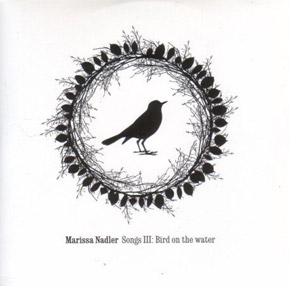 Everything comes together on this, the third album by folk songstress Marissa Nadler, her best yet. This time out, Marissa Nadler's guitar and songwriting skills have advanced by leaps and bounds, and the atmospheric production by Greg Weeks adds the perfect lysergic touch that elevates the album to the status of a contemporary classic of psych-folk.
Everything comes together on this, the third album by folk songstress Marissa Nadler, her best yet. This time out, Marissa Nadler's guitar and songwriting skills have advanced by leaps and bounds, and the atmospheric production by Greg Weeks adds the perfect lysergic touch that elevates the album to the status of a contemporary classic of psych-folk.
Everything that made Ballads of Living and Dying and The Saga of Mayflower May stand out among an overpopulated indie folk subgenre is very much present on Songs III: Bird on the Water. The vocals are just as beautiful and spine-tingling and the songwriting is still top-notch, filled with spooky murder ballads and haunting ghost stories. A canny use of echo, reverb and doubling effects, as on previous albums, helps push the songs into the realm of atmospheric psychedelia. Unlike other popular indie folk acts like Joanna Newsom and Devendra Banhart, Nadler has resisted the temptation to go big band; even with the added instrumentation on some of these tracks, her vocals and precise fingerpicked melodies are still the center of attention. Marissa Nadler, much to her chagrin, will continue to remind people of 1960s British folk artists such as Vashti Bunyan and Celia Humphries, even though her chief influences are on this side of the Atlantic: Leonard Cohen, Joni Mitchell, and Judee Sill.
I don't want to trot out the tired, sexist standby that "behind every great female artist is a man pulling the strings," as that isn't the case here, but a big part of what makes this album special in comparison to Nadler's previous output is the production and added compositional elements of one Greg Weeks. Weeks has been a mainstay of indie music for several years now, with amazing solo albums such as Awake Like Sleep and his band Espers, the only current group which has any claim to the mantle of classic Brit folk groups such as Incredible String Band or Fairport Convention. What he does for Marissa Nadler is to fill out each track with subtle synthesizer drones, atmospheric speaker noise and tape hiss. On a few tracks, Weeks adds his own splashes of acid-addled lead guitar. While Marissa certainly needs no help in the songwriting, singing and guitar-playing department, the added touch of a skilled producer pushes this material over the top into something very special.
The cyclical fingerpicked chords swirl around and gather dust and cobwebs on the opener "Diamond Heart," which will seem hauntingly familiar to anyone who has listened to Marissa's first two albums. Is this familiarity the result of self-plagiarism, or just an identifiably signature style? The answer to this question is not as important as it might at first seem, as repetition and familiarity work in favor of Nadler's music, her music and lyrics seeming to draw from some vast, unconscious archive of Appalachain and British Isles folk and ballad modes. This is not to say that the entire album is self-derivative, as Nadler quickly stakes out new territory with "Dying Breed," which sounds amazingly like the kind of mindbending folk setting engineered by Michael Cashmore and Steven Stapleton for Current 93's early 1990s material. Swirling, phased drones and dusty bell tones circulate around the speaker channels as Marissa's wintry vocals weave in and out, the lyrics bewitching with their esoteric sense imagery: "Red is the color of memory/Blue is the way to green/And darling you did gamble, because you were a dying breed."
"Mexican Summer" is another standout, and quite different from anything else in the Marissa Nadler songbook. Sparse percussion and flourishes of electric guitar fill out the composition, which is one of the happiest, evergreen melodies on an otherwise spooky and melancholic album. "Silvia" makes brilliant use of synthesized organic melodies and Marissa's multitracked vocals, which multiply into a chorus of answering voices at just the right point of the song, transforming the song into a potential pub sing-along. "Rachel" is another favorite of mine, not just because of its beautiful, sad melody that sounds as lovely as anything Bert Jansch ever committed to tape, but also because of Greg Weeks' brilliant third-eye guitar lead, which arrives at a minute and a half into the track and turns the proceedings into something indelibly magical and transporting.
Perhaps the only misstep on the album is Nadler's cover of Leonard Cohen's oft-anthologized song "Famous Blue Raincoat." The song is a kind of open letter to someone from Cohen's past who may be insane, and has probably joined some kind of cult in the desert. Of course, that could just be a series of metaphors, but no matter. What makes Cohen's recording of the song work so well is the fact that he is not insistent on shoehorning every line and verse into the song's melody, and most of the song is performed in his trademark, sardonic method of speak-singing. Nadler is clearly in love with the source material, doing her best to cram the lyrics into the melodic framework, the lyrics subsequently losing their ability to double as an ironic monologue. Nadler's ethereal vocals make the lyric seem light as air, and the words are bereft of their gravity. However, this is only one superfluous track on an otherwise flawless album.
samples:
Read More
- Administrator
- Albums and Singles
 After their fantastic second album, Pelican return with City of Echoes. It is another quality performance from the boys but it does not always reach the same highs as The Fire in our Throats will Beckon the Thaw or the intensity of their live performance. That being said, Pelican are still on top of their game. It's just unfortunate that they have previously proven themselves to be so good that all their new music is subject to tougher scrutiny.
After their fantastic second album, Pelican return with City of Echoes. It is another quality performance from the boys but it does not always reach the same highs as The Fire in our Throats will Beckon the Thaw or the intensity of their live performance. That being said, Pelican are still on top of their game. It's just unfortunate that they have previously proven themselves to be so good that all their new music is subject to tougher scrutiny.
City of Echoes, there is always a glimmer of sunshine present. Right up the closing notes of "A Delicate Sense of Balance," the group keeps my spirit high, which is a delightful change to being aurally assaulted. It leaves me with renewed vigor for an aural assault after Pelican.
I am surprised that they have not made a bigger name for themselves considering the likes of Isis and Tool have done so. Perhaps it is the lack of vocals that is stopping them from moving up the sales ladder but their sound is very open in terms of appeal while still keeping their credibility. There are a few moments on City of Echoes with nods towards mainstream stadium rock which are bombastic enough to transcend any mental images of a guitarist standing on a cliff face wailing on his guitar. Of course, there is also the pummelling power that is expected from Pelican but it is the blending of cool influences with usually suspect ones that make this music work; "Lost in the Headlights" sees the ghosts of Black Flag and Metallica duking it out. It should be cheesy but it isn't, especially towards the end when all influences become fully assimilated.
Credit is due to Aaron Turner for his work on the album's sleeve: the seaweed-like tendrils with the gloss spotted text combine beautifully to reflect the music. It is too bad that the same effort is not put into all of Hydra Head's releases but obviously Turner does not have the time to do a lot of design on top of his already busy schedule. Although, once he keeps getting the all important music out on his label then I have little reason to complain.
While City of Echoes is not their best album, it would be churlish of me to suggest that it is anything short of great. Pelican continue to impress me and I look forward to hearing how this material pans out live considering the stage is their true calling in this life. Luckily, they are not exactly dull in the studio so I will be giving this its fair share of spins in the meantime.
samples:
Read More
- Administrator
- Albums and Singles
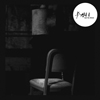 While experimental and ambient musics had previously focused their instrumentation on the latest technology, the pendulum has shifted as it often does, and the guitar is once again "cool" to use. French guitarist Johannes Buff takes this approach, treating and affecting his guitar with a backing of unprocessed field recordings, resulting in an alien, yet familiar sound.
While experimental and ambient musics had previously focused their instrumentation on the latest technology, the pendulum has shifted as it often does, and the guitar is once again "cool" to use. French guitarist Johannes Buff takes this approach, treating and affecting his guitar with a backing of unprocessed field recordings, resulting in an alien, yet familiar sound.
Knell does do drone, as many with a six string these days do. However, Buff's approach to it is not monolith riffing, but rather an obsessive attention to single string vibrations, which open up the first of two massive, untitled pieces on this disc. The rumbling metal vibrations are met with looped field recording sounds which all eventually give way to recognizable guitar strums. Unlike a lot of recordings like this, Knell is not afraid to let the characteristic tone of his instrument shine through at times. As it continues, the guitar morphs into pure feedback screech as well as a swarm of insects before ending on that gentle guitar tone over birds chirping in the distance.
The second track is more deterministic in its sound, opening with gentle guitar strums over field recordings of a rainy day. The mix builds in intensity, as the guitar becomes a massive electronic drone that increases in intensity and volume until it is a sustained wall of noise, all before ending on a restrained note of a field recording. Interestingly enough, even during the most intense parts of this track, it never feels too harsh or violent, it manages to retain a gentle warmth throughout.
Last Ten Meters has some of the elements of the '90s isolationist movement in ambient music, but instead of relying on audio processing (such as Main or similar artists), the innate sound of the guitar is allowed to come through at times, giving it a less synthetic, more organic feeling throughout. It is a fascinating, unique sounding work made all the better by its gorgeous packaging, a staple of the Utech label.
samples:
Read More
- Administrator
- Albums and Singles
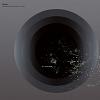 Its dark grey sleeve depicting a black sphere is an aberration in Rune Grammofon's usually bright and cheerful aesthetic and indeed the third album from Ultralyd promises to be a much more intense ride than most of the label's output. The sleeve does not mislead: this is the long night of Norway made music and this is a powerful and brilliant album that is as a far cry from the usual merry styles of Ultralyd's label mates.
Its dark grey sleeve depicting a black sphere is an aberration in Rune Grammofon's usually bright and cheerful aesthetic and indeed the third album from Ultralyd promises to be a much more intense ride than most of the label's output. The sleeve does not mislead: this is the long night of Norway made music and this is a powerful and brilliant album that is as a far cry from the usual merry styles of Ultralyd's label mates.
From the get go, Ultralyd build up a threatening atmosphere on Conditions for a Piece of Music but never give over entirely to creating a mood. The music here never becomes just a soundscape or noodling; they can put out a solid groove when they need to. "Comphonie III" has a fantastic (albeit simplest) saxophone line that captures my attention from the first note blown. It is only later that the textures being played on the guitar and bass underneath the sax become apparent. This is a common motif to the album; a powerful groove handcuffs the listener to a proverbial radiator and from there the rest of the band terrify the listener into submission with squalls of feedback and reverb drenched howls.
There is a dichotomy at the heart of Ultralyd's music. On one hand, they can be very, very funky—the drumming and sax on "Comphonie V" could have been lifted from a classic James Brown track—on the other hand, on pieces like "Musica Imperativa," they explore the outer regions of music where things are darker and very unfunky, creating full pieces of music out of blasts of music that would be the freak out in any other artist's work. The combination of these two different approaches makes for a unique experience. The label makes a big deal over the jazz side of Ultralyd but it is not jazz nor rock by any stretch of the imagination, it is the twisted wreckage of music being bent into new and exciting shapes. Listening to Conditions for a Piece of Music makes me think of the phrase used to describe Nurse With Wound: "Think jazz, think punk attitude."
Ultralyd have created a beautiful monster on this album, blowing their previous releases out of the water (which is some feat!). Conditions for a Piece of Music is by far one of the most unique sounding albums of this year, providing a challenging but utterly satisfying body of music.
samples:
Read More
- Administrator
- Albums and Singles
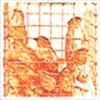 Martyn Bates' elusive work as Migraine Inducers issued before his involvement with Eyeless in Gaza finally gets released on CD. Originally circulated on cassette in a tiny quantity as Dissonance/Antagonistic Music in 1979, it later saw a marginally wider release in the United States in somewhat abbreviated form. The complete version of this legendary album is included here, as is a second disc recorded in 1994 with Gaza partner Peter Becker to complete the work.
Martyn Bates' elusive work as Migraine Inducers issued before his involvement with Eyeless in Gaza finally gets released on CD. Originally circulated on cassette in a tiny quantity as Dissonance/Antagonistic Music in 1979, it later saw a marginally wider release in the United States in somewhat abbreviated form. The complete version of this legendary album is included here, as is a second disc recorded in 1994 with Gaza partner Peter Becker to complete the work.
Although released in a small quantity, it did not go unnoticed. In fact, an early fan was Geoff Rushton, who wrote of it in Stabmental as "violent, anti-music" and even asked permission to use some of it for a "suicide performance." Haunting and gritty, this music may surprise Gaza fans accustomed to melody and structure. Bates himself called this work a "scream of frustration," and the description is apt.
Using things like electric guitar, food blender, chair springs, various percussion, motors, marbles, radio, and voice, Bates creates a howling and rusty landscape unlike anything heard before. Tape manipulation, loops, and effects further splinter the chaos. At times it sounds like Bates is disemboweling his instruments, evincing every last sound they're capable of producing like a shaman practicing a maddening form of divination through technological evisceration. When his voice appears, it is masked and mutated beyond recognition, pared down to its most primal parts. Even so, Bates isn't above throwing in bits of melody with electronics or his guitar, yet these respites are brief, only serving to create a longing for structure that's never adequately resolved. Bates further confounds listeners by not giving the tracks any definitive titles. Although he gives evocative suggestions such as "Child Squashing Frog," "Mona Lisa's Sister and Subsequent Burning," or "Dead Seahorse With Sky Melting," the nine listed titles do not nearly cover the 21 tracks found on the first disc alone. Clearly, the music is open to interpretation even as it sets the imagination on fire.
Becker helped Bates complete another version of Dissonance in 1994, included here as a second disc. Technological advances don't overshadow the intent of the original, if they're even utilized at all, and the duo do a remarkable job of unlearning or forgetting all of their musical accomplishments as EIG. The terrain they cover here is similar to Bates' original, if a bit more studied and patient in places, yet it surprisingly recalls the previous work quite accurately considering that 15 years had passed since the original. While the yearning for some sort of closure is a different creative impulse than that which sparked the original, the harrowing results are much the same.
Despite their limitations in fidelity, these recordings still sound as fresh and bizarre as anything I've heard in years. Now that they're available to a wider audience, Bates' reputation as an innovator and restless investigator of sound is more deserved than ever.
samples:
Read More
- Administrator
- Albums and Singles
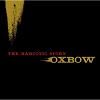 While The Narcotic Story is not Oxbow's best, there are some great songs on it that refine their bluesier side but there is not as much of the heavy Oxbow that has flexed its muscles on previous releases. However, it is far from a bad album and certainly will not disappoint those who have enjoyed their output so far.
While The Narcotic Story is not Oxbow's best, there are some great songs on it that refine their bluesier side but there is not as much of the heavy Oxbow that has flexed its muscles on previous releases. However, it is far from a bad album and certainly will not disappoint those who have enjoyed their output so far.
Oxbow get right into the thick of things with "The Geometry of Business." Its mixture of raw bar room brawl blues sound with the agony of daily existence found is strongly indebted to Nick Cave and the Bad Seeds, particularly their first few albums and EPs. Throughout The Narcotic Story it is hard not to insert your own Cave-style "Yeah" into many of the songs. Although Oxbow are musically exploring a similar style as the Bad Seeds, they do not slip into pure copycat mode. Oxbow's distinctive stamp is all over the music and Eugene Robinson's vocals are a world away from Cave's croon. His yelping style dispenses with clarity (I honestly have little clue as to what he is singing) but his delivery is absolutely brimming with emotion. It can get tiring after a while, not that it is irritating but that it is mentally tiring to listen to a man screaming out his anguished thoughts for 45 minutes.
There is also a very strong cinematic feel to The Narcotic Story: the use of string sections throughout the album soften the burly and masculine nature of some of the songs. "She's a Find" could be a tough listen were it not for the strings and piano which allow the band to pull back and explore the song fully over its nine minutes. I did find this track a little clichéd and cloying on first listen but it has proven to be one of the better moments on The Narcotic Story once I got into it. The album sounds great in terms of production, these more restrained songs need a sensitive touch in the studio and thankfully that is what they got.
Some of the album does get too derivative. "Down a Stair Backward" and "Frankly Frank" are both based around fairly standard blues structures but without any elements of innovation, only Robinson's singing makes them stick out at all and even at that these are not his best performances. These less than spectacular tracks are only the exception, most of The Narcotic Story is solid but unfortunately the flow of the album is disrupted by these songs. For the moment skipping these songs makes a big difference but considering I found it hard to get into some of the other songs, there is hope that they will grow on me too.
samples:
Read More

